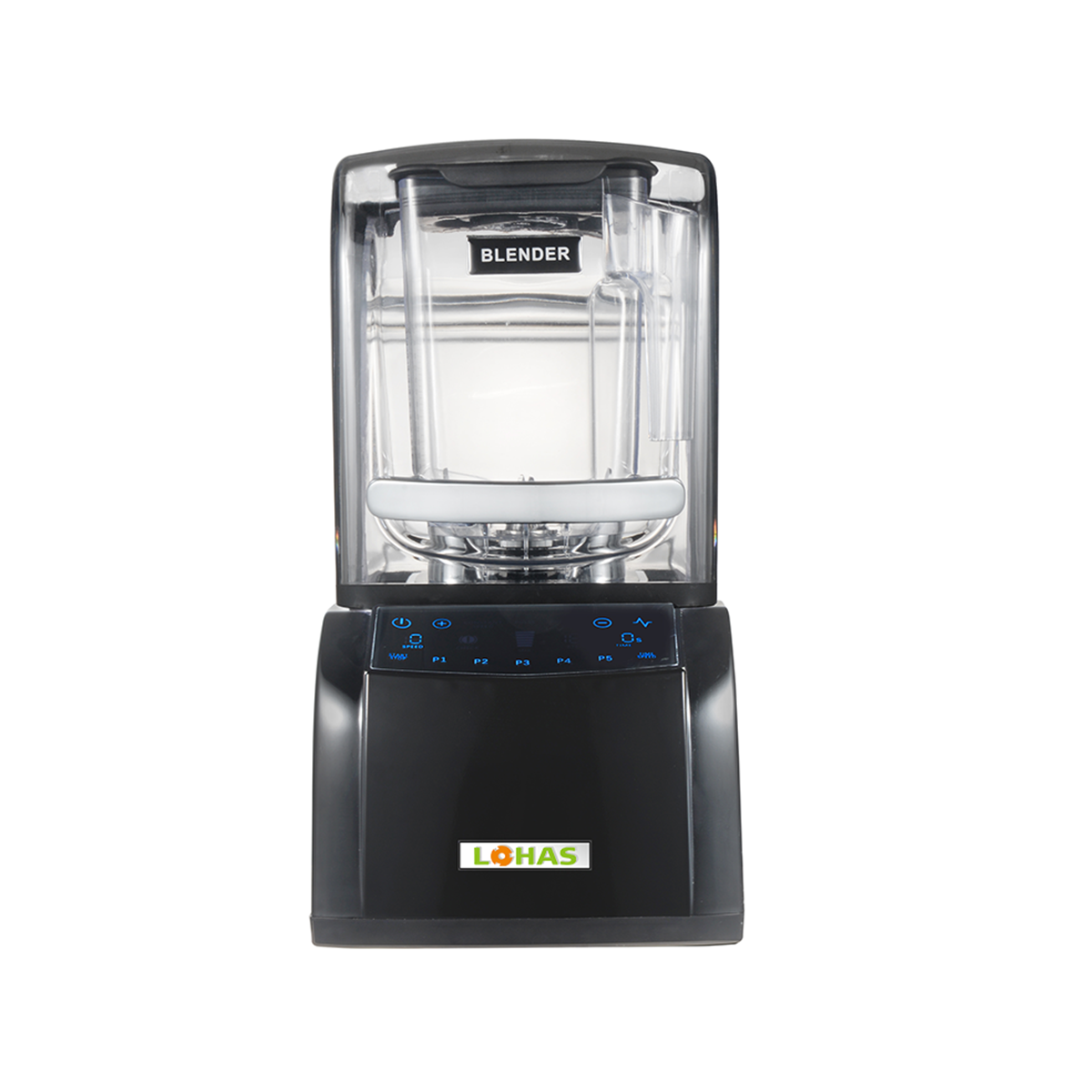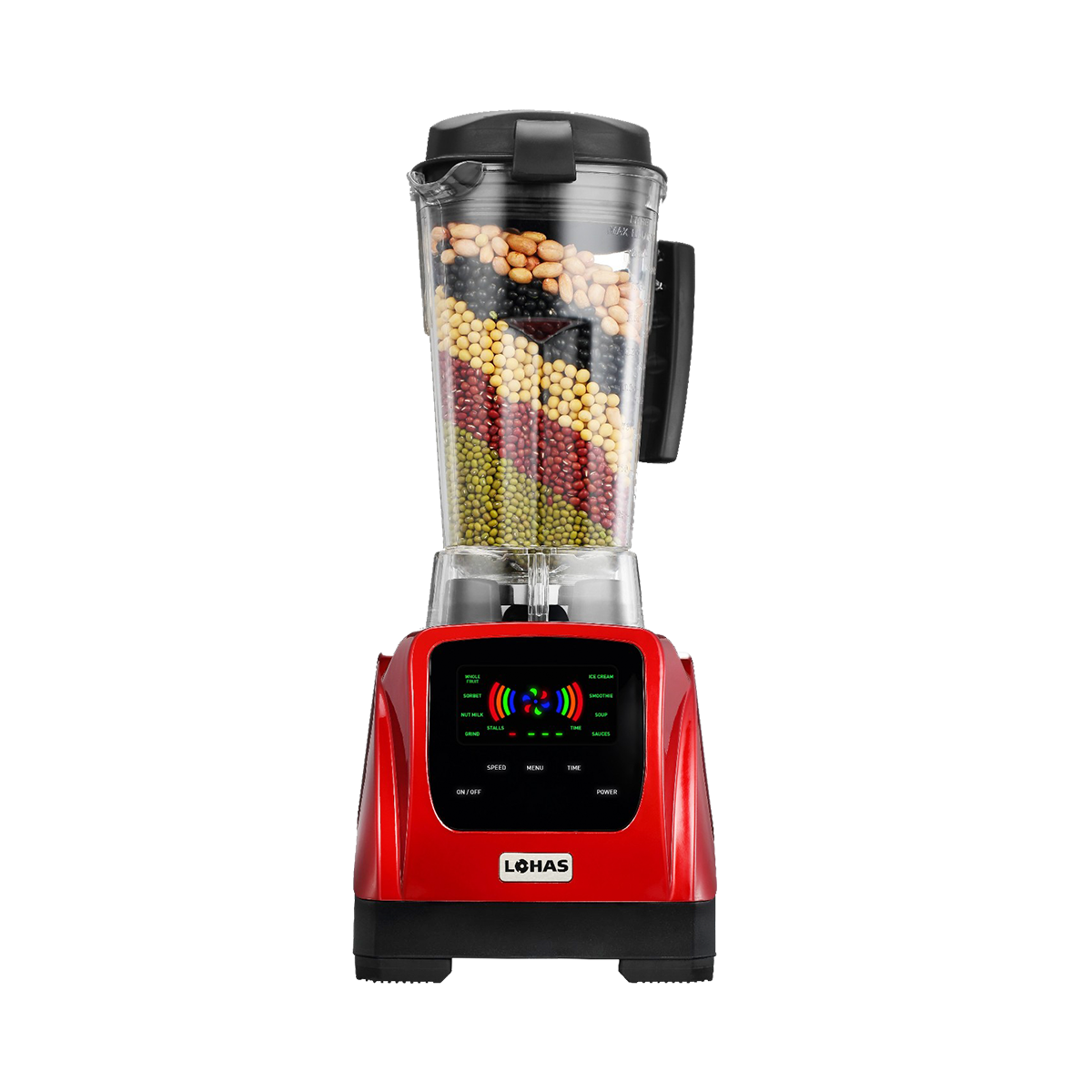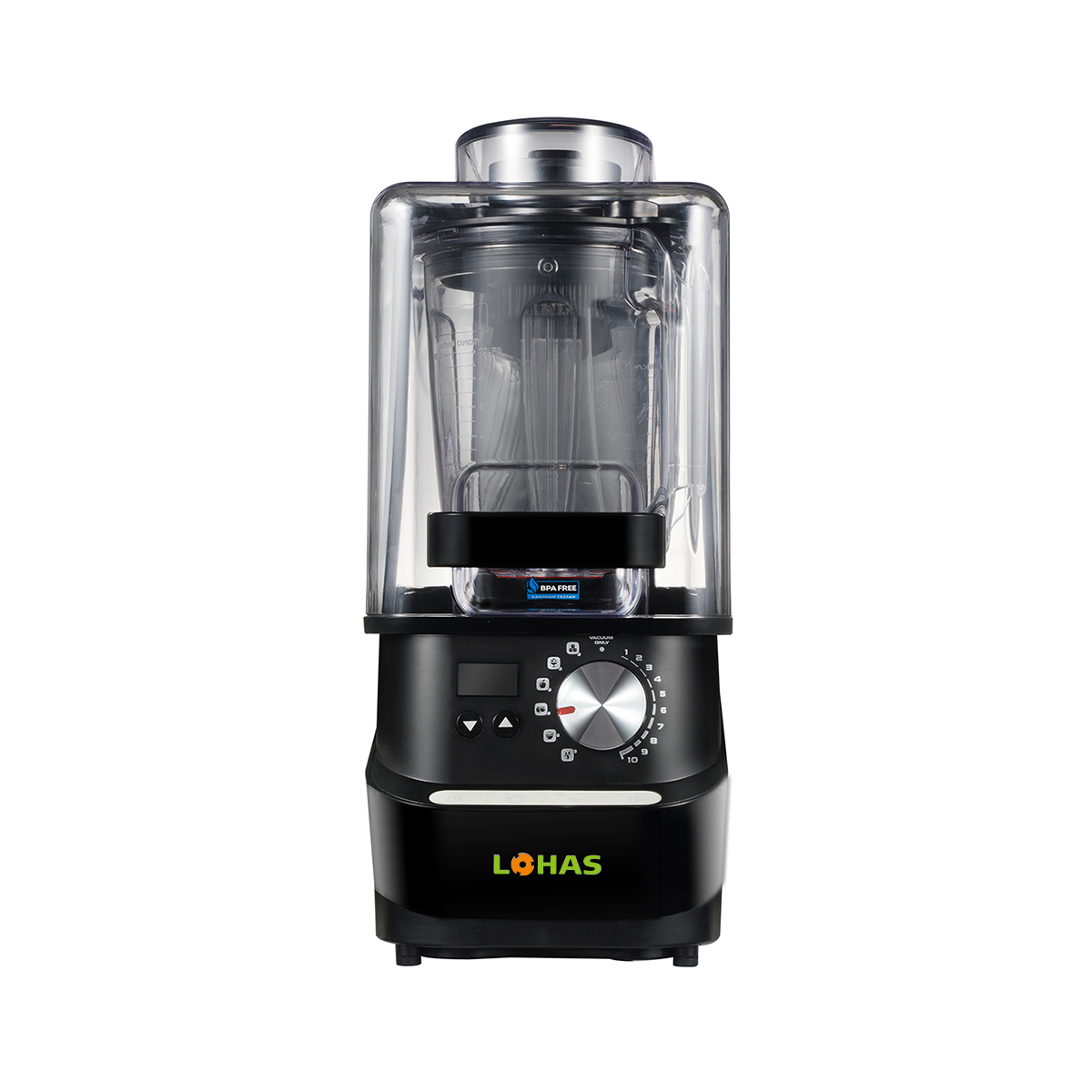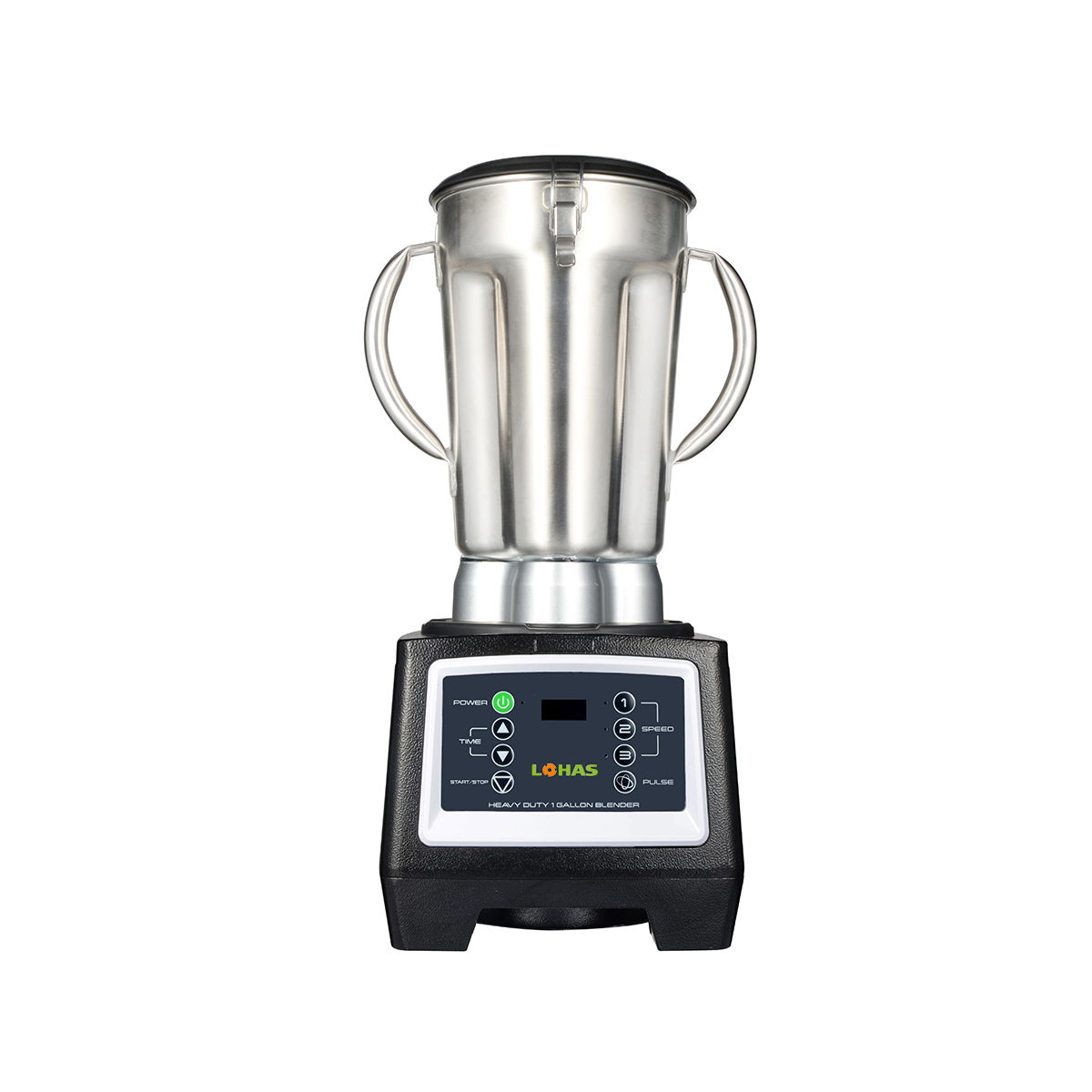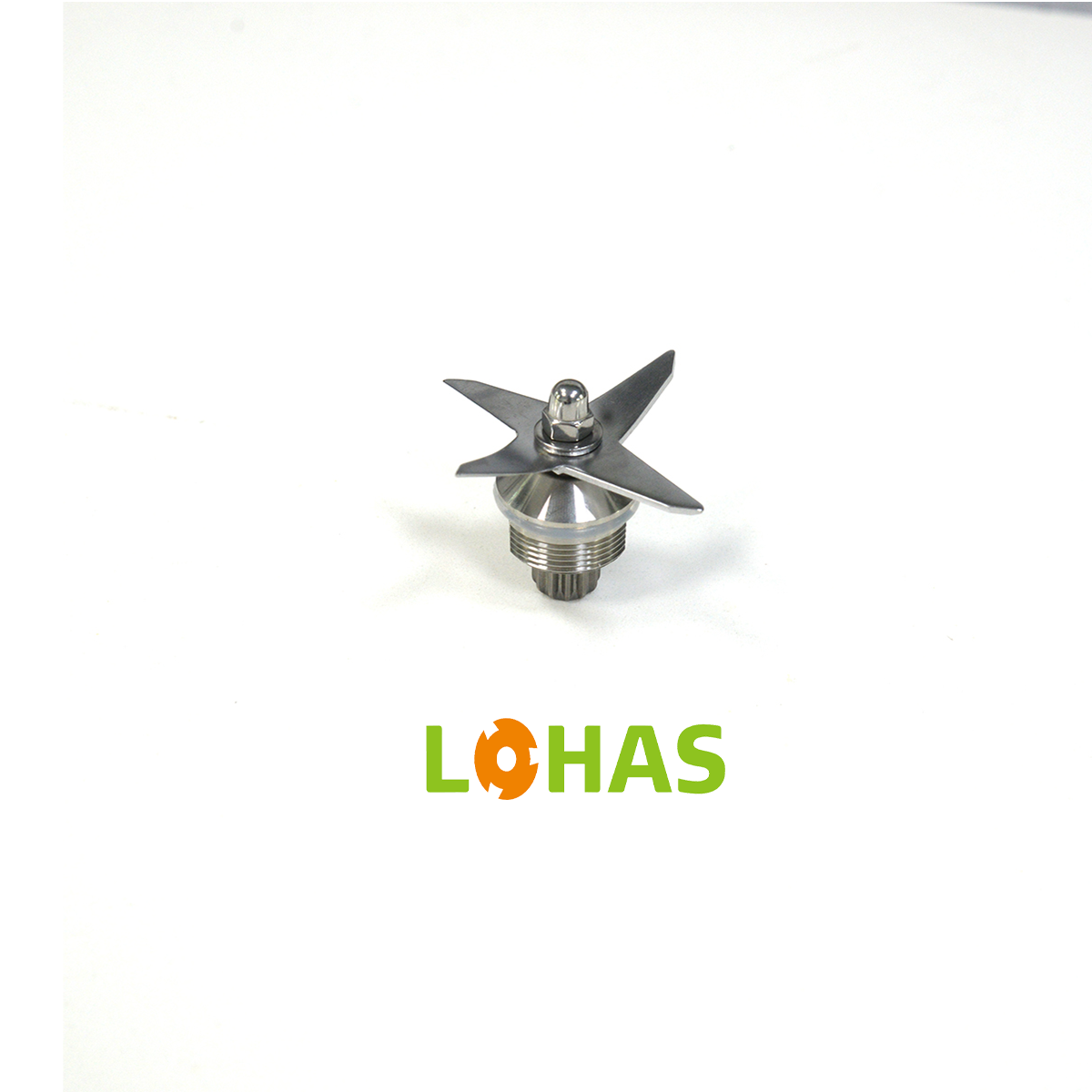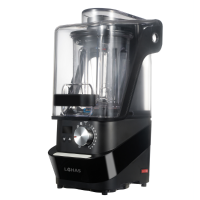Definition og grundlæggende funktionalitet
En blender er en køkkenmaskine, der er designet til at blande, homogenisere eller emulgere mad og andre stoffer. Den findes ofte med en høj kande og en fast kniv nederst. Motoren får kniven til at rotere hurtigt og omdanner ingredienserne til en jævn blanding. Blenders kræver væske for at fungere effektivt, hvilket gør dem perfekte til fremstilling af glatte tekstrurer.
Almindelige anvendelser og brug
Blenders er rigtig gode, når du skal lave smoothies, shakes eller supper. Du kan også bruge dem til at knuse is til friskende drikke. De klarer bløde frugter og grøntsager nemt og omdanner dem til lækre puréer. Hvis du elsker at lave saucer eller dressinger, kan en blender blive din bedste ven i køkkenet.
Definition og grundlæggende funktionalitet
En foodprocessor er et andet alsidigt køkkenværktøj, men den adskiller sig fra en blender i design og funktion. Den har en bred skål og udskiftelige knive, hvilket giver dig mulighed for at udføre forskellige opgaver. Du kan hakke, skære, revne og endda kna det dejen med en foodprocessor. Den kraftfulde motor klarer både tørre og våde ingredienser.
Almindelige anvendelser og brug
Foodprocessors er fremragende til at hakke grøntsager, skære frugt i skiver og revost. De kan bruges til at forberede dejen til brød eller pastasager. De gør også hurtigt arbejde med nødder og frø og omdanner dem til fine krummer eller paster. Hvis du nyder at lave hjemmelavede dips eller smørrebrødsmadder, kan en foodprocessor spare dig tid og besvær.
Nøglen til forskellen mellem mixere og foodprocessors
At forstå forskellen mellem mixere og foodprocessors kan hjælpe dig med at vælge det rigtige værktøj til opgaverne i dit køkken. Lad os analysere deres design, struktur, ydeevne og funktionalitet.
Bladtyper og konfigurationer
Blenders har som udgangspunkt små, faste klinger i bunden af beholderen. Disse klinger roterer hurtigt for at homogenisere og blande ingredienser. Du skal tilføje væske, for at blenderen virker effektivt. Derimod leveres food processors med udskiftelige klinger. Du kan skifte disse klinger til at hakke, skære eller revne, afhængigt af dine behov. Denne fleksibilitet gør food processors mere alsidige til forskellige opgaver.
Skål- og beholderstørrelser
Blenders har typisk høje beholdere. Disse er perfekte til at lave smoothies og supper. Designet hjælper med at skabe en hvirvelstrøm, der suger ingredienserne ned mod klingerne. Food processors har derimod brede skåle. Dette design giver dig mulighed for at forarbejde større mængder mad på én gang. Du kan nemt hakke grøntsager eller kna det dejen uden at skulle bekymre dig om oversprøjt.
Ydelse og funktioner
Effekt og hastighedsvarianter
Blenders har ofte kraftfulde motorer. De er glimrende til opgaver i høj fart som at knuse is eller lave silkebløde smoothies. Du kan justere fartindstillingerne for at opnå den ønskede tekstur. Madprocessorer har også stærke motorer, men de fokuserer på præcision. Du kan regulere farten til at hakke eller skære ingredienser jævnt. Denne præcision er ideel til forberedelse af salater eller revning af ost.
Flerbrug i opgaver
Forskellen mellem blenders og madprocessorer bliver tydelig, når man ser på deres alsidighed. Blenders er gode til væskebaserede opskrifter. Du kan nemt lave drikke, pureer og saucer. Madprocessorer derimod håndterer et bredere vifte af opgaver. Du kan hakke, skære, rive og endda mixe dej. Denne alsidighed gør madprocessorer til et værdifuldt værktøj til forskellige madlavningssituationer.
Opgaver, der passer bedst til blenders
Smoothies og Drikke
Du elsker at starte dagen med en forfriskende smoothie eller afslutte den med en lækker milkshake. Blender er perfekte til disse opgaver. De blander frugt, grønt og væsker til en glat, drikkebar konsistens. Du kan også knuse is til cocktails eller frossen drikke. De højhastighedsbladene gør hurtigt arbejde ud af at blande ingredienser til en silkeagtig tekstur.
Mos og supper
Når du skal lave mos eller suppe, bliver en blender dit vigtigste redskab. Den omdanner tilberedt grønt til cremede supper eller babymad. Du kan også lave glatte saucer og dressinger. Blenders evne til at emulgere ingredienser sikrer en ens tekstur hver gang.
Opgaver, der passer bedst til madprocessorer
Hakke og skære
Du vil spare tid på madlavning. En madprocesor er fremragende til at hakke og skære. Den hakket løg hurtigt, skiver agurk og revner gulerødder. Du kan forberede store mængder grønt på få minutter. De udskiftelige blade giver dig mulighed for at tilpasse snittet efter din opskrift.
Dej- og pastabehandling
Personer, der elsker at bage, vil sætte pris på en food processor's evne til at håndtere dej- og pastabehandling. Du kan blande og knæde dej til brød, pizza eller paster. Den kraftfulde motor sikrer jævn blanding og sparer dig for manuelt arbejde. Du kan også nemt fremstille lagkagedej eller kødsovs.
At forstå forskellen mellem mixere og food processorer hjælper dig med at vælge det rigtige værktøj til hver opgave. Uanset om du skal lave en smoothie eller hakke grøntsager, gør det din madlavning nemmere og mere fornøjelig.
Gør det rigtige valg til dit køkken
At skulle vælge mellem en mixer og en food processor kan virke overvældende. Men ikke bekymre dig, jeg har dækket dig. Lad os gøre det simpelt, så du kan træffe det bedste beslutning for dit køkken.
Vurder dine køkkennødvendigheder
At forstå dine madlavningvaner er nøglen til at vælge den rigtige enhed.
Hyppighed af brug
Tænk over, hvor ofte du laver mad. Laver du retter hver dag eller kun i weekenderne? Hvis du ofte tilbereder mad, kan det være værd at investere i begge apparater. De har hver deres styrker, som kan gøre din madlavning mere effektiv. Men hvis du kun laver mad sjældent, bør du overveje, hvilke opgaver du udfører mest. Det vil hjælpe dig med at beslutte, hvilket apparat der vil tjene dig bedst.
Typer opskrifter
Overvej de opskrifter, du elsker at lave. Er du en smoothie-entusiast eller en ivrig bager? Smoothieblenders er perfekte til væskebaserede opskrifter som smoothies og supper. Madprocessorer er gode til at hakke, skære og lave dej. Lav en liste over dine favoritretter. Det vil guide dig i forhold til at vælge det apparat, der stemmer overens med dine kulinære interesser.
Budget og pladsforhold
Dit budget og køkkenspace spiller også en afgørende rolle i dit valg.
Omkostningsoverførsel
Blenders og fødevareprocessorer findes i mange forskellige prisklasser. Modeller i højere segmenter tilbyder flere funktioner og større holdbarhed, men de har også en højere pris. Hvis du er på budget, skal du lede efter modeller, der giver den bedste værdi for pengene. Overvej hvilke funktioner, der er nødvendige for dine madlavningbehov. Nogle gange kan en model i mellemklassen give dig alt, hvad du har brug for, uden at koste for meget.
Opbevaring og plads på køkkenet
Plads er en kostbar ressource i enhver køkken. Blenders tager som udgangspunkt mindre plads, hvilket gør dem lettere at opbevare. Fødevareprocessorer med deres brede skåle og mange tilbehørsdele kræver ofte mere plads. Mål din tilgængelige plads på køkkenet og i opbevaringsrummet, før du køber. Sørg for, at du har nok plads til at placere dit nye køkkentøj behageligt.
Ved at vurdere dine madlavningsbehov og samtidig tage højde for dit budget og pladsforhold, kan du med sikkerhed vælge det rigtige køkkentøj til dit hjem. Uanset om du vælger en blender, en fødevareprocessor eller begge dele, vil du være rustet til at håndtere enhver opskrift med lethed.
Afslutningsvis kan forståelsen af forskellen mellem mixere og madprocessorer markant forbedre din køkkenerfaring. Mixere er fremragende til at skabe glatte teksturer til drikke og pureer, mens madprocessorer tilbyder alsidighed i hakning, skæring og dejs-tilberedning. Hvis du ofte laver smoothies eller supper, er en mixer det rigtige valg. For dem, der elsker at bage eller har brug for hurtig madlavning, er en madprocesor uvurderlig. Overvej dine madlavningvaner og pladsforhold for at træffe det bedste valg. Uanset om du vælger en eller begge, vil du være godt rustet til gastronomisk succes.

